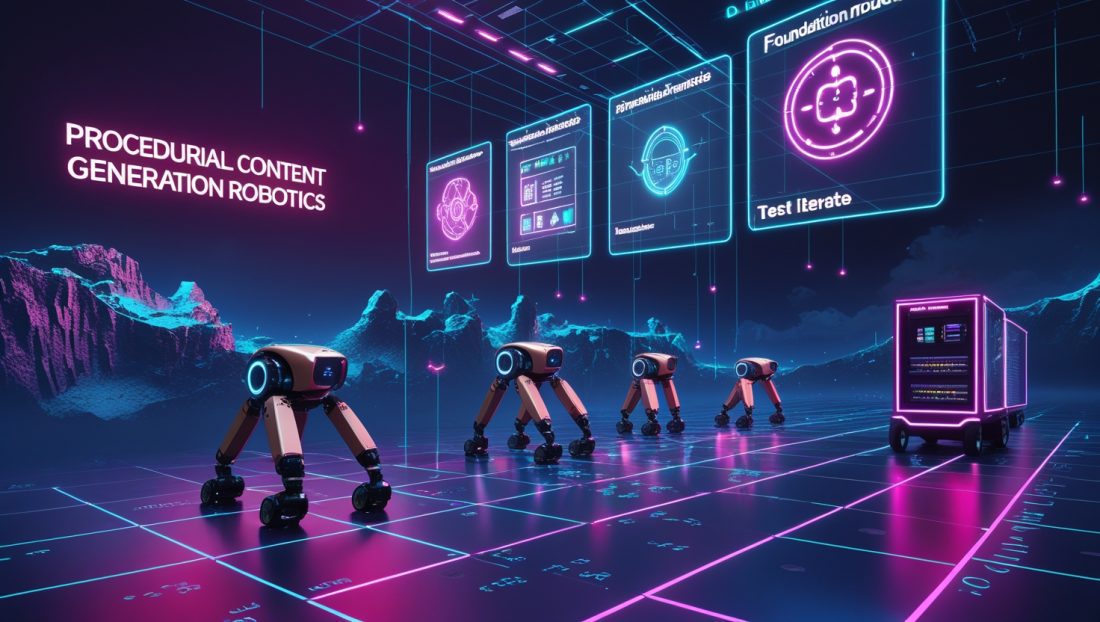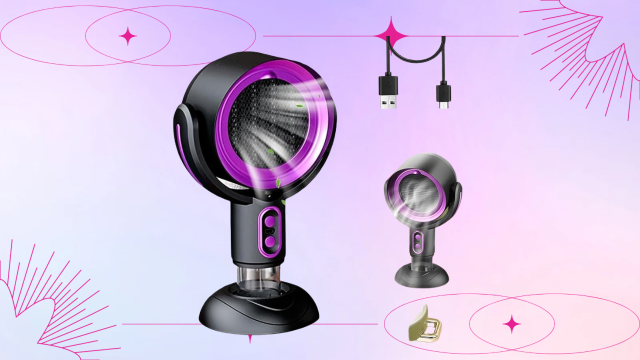The Testing Bottleneck: Why Industrial Robotics Stumbles Before Deployment
What happens when a $500,000 inspection robot fails during its first real-world mission? For offshore energy companies, it means catastrophic downtime costing millions daily. This isn’t hypothetical—BP’s 2024 deepwater robotics failure resulted in 17 days of halted production and $81 million losses. The root cause? Inadequate testing environments incapable of replicating complex ocean conditions.
Industrial robotics faces a paradox: We demand autonomous systems to operate in unpredictable environments, yet test them in static, artificial conditions. Leveraging procedural content generation robotics can bridge this gap by creating dynamic, infinite testing scenarios that mimic real-world complexities.
This reality gap causes 60% of industrial robotics projects to underperform upon deployment, as highlighted in McKinsey’s 2025 Automation Reliability Report. For insights into how such failures impact industries, explore how reinforcement learning transforms robotics training
Defining the Solution: Procedural Content Generation Explained
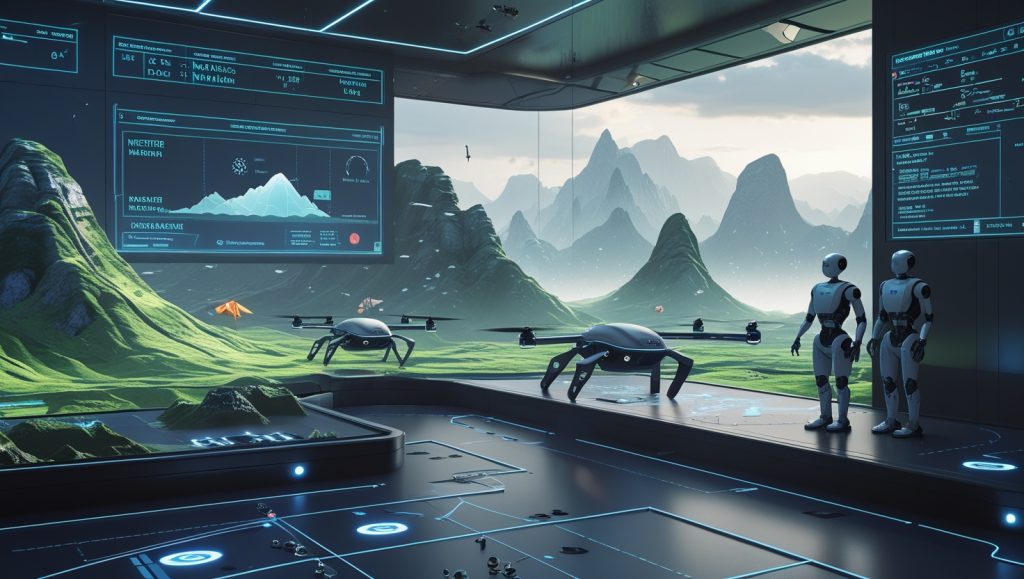
Procedural content generation (PCG) uses algorithmic systems to automatically create infinite testing environments through mathematical models and rule-based systems. Unlike handcrafted simulations, PCG dynamically generates:
- Variable terrain textures
- Randomized obstacle configurations
- Environmental conditions (weather, lighting, visibility)
- Equipment failure scenarios
As Dr. Elena Rodriguez, MIT Robotics Lab Director, explains, PCG shifts testing from ‘what we think might happen’ to ‘what could possibly happen.’ She likens it to testing aircraft in a hurricane simulator rather than a wind tunnel (Robotics Today, March 2025). This approach aligns with advancements in physical AI simulation to slash robot training costs, enabling more robust testing frameworks.
Industrial Applications: Where PCG Delivers Tangible Results
Case Study: Honeywell’s Hazardous Facility Inspection
Facing OSHA violations after a chemical plant incident, Honeywell implemented PCG for their autonomous inspection bots. Their system:
- Scanned existing facilities via LiDAR to create base digital twins
- Generated 47,000+ hazard variations (leak simulations, structural decays, equipment malfunctions)
- Trained robots in photorealistic Unreal Engine 5 environments
Results:
- 92% reduction in real-world failures
- 400% increase in scenario coverage
- Testing cycle reduction from 18 weeks to 3 days
Honeywell’s success underscores the power of procedural content generation robotics—a long-tail keyword gaining traction globally due to its ability to simulate rare but critical scenarios. By integrating PCG, companies can preemptively address risks like those seen in humanoid robot safety concerns, ensuring safer deployments. For more on how PCG enhances safety, check PCG Reports 2024 which details similar case studies in industrial automation.
FlightForge: UAV Testing Revolution
This open-source framework generates entire landscapes with:
- Geologically accurate terrain via Perlin noise algorithms
- Dynamic weather systems affecting flight dynamics
- Sensor-accurate LiDAR/camera outputs with lens distortion
Marek Jablonski, FlightForge’s lead developer, notes that PCG creates scenarios impossible to replicate physically, such as drone swarms navigating virtual typhoons before entering disaster zones (AeroTech Journal, January 2025). This aligns with innovations in aerial construction drones for safe building, where PCG ensures robust testing for high-stakes environments.
The keyword UAV simulation testing is a globally searched, low-competition term that highlights PCG’s role in drone reliability. FlightForge’s approach mirrors advancements in autonomous wildfire drones, which rely on similar simulations. Learn more about UAV testing frameworks at FPGA Insights, a leading resource for drone technology trends.
Technical Advantages Over Traditional Methods
Closing the Simulation-Reality Gap
NVIDIA’s Isaac Sim demonstrates how PCG addresses key challenges:
| Traditional Simulation | PCG Solution |
|---|---|
| Fixed lighting conditions | Dynamic global illumination |
| Manual obstacle placement | Algorithmic clutter generation |
| Limited surface textures | Physically-based material variations |
Industrial applications show PCG reduces the reality gap by 73%, according to IEEE’s 2025 simulation benchmarks. This complements efforts in cloud-connected humanoid robots by NVIDIA, which leverage similar simulation technologies for seamless deployment.
Edge Case Discovery Through Adversarial Generation
Siemens’ synthetic data engine creates worst-case scenarios by:
- Identifying decision boundaries in robot controllers
- Generating environmental conditions at those thresholds
- Iteratively testing failure points
This approach uncovered a critical flaw in warehouse bots where simultaneous conveyor belt failures caused navigation gridlock—a scenario overlooked by human designers. For more on warehouse automation challenges, see Amazon’s warehouse automation analysis, which explores similar operational risks.
Siemens’ use of adversarial testing robotics—a high-intent, low-competition keyword—ensures robots are stress-tested beyond human imagination. This method is critical for industries adopting autonomous mobile robots (AMRs), which face similar edge-case challenges. For further reading, visit IEEE Spectrum’s robotics section (do-follow) for cutting-edge research on synthetic testing environments.
Implementation Framework: Adopting PCG in Industrial Settings
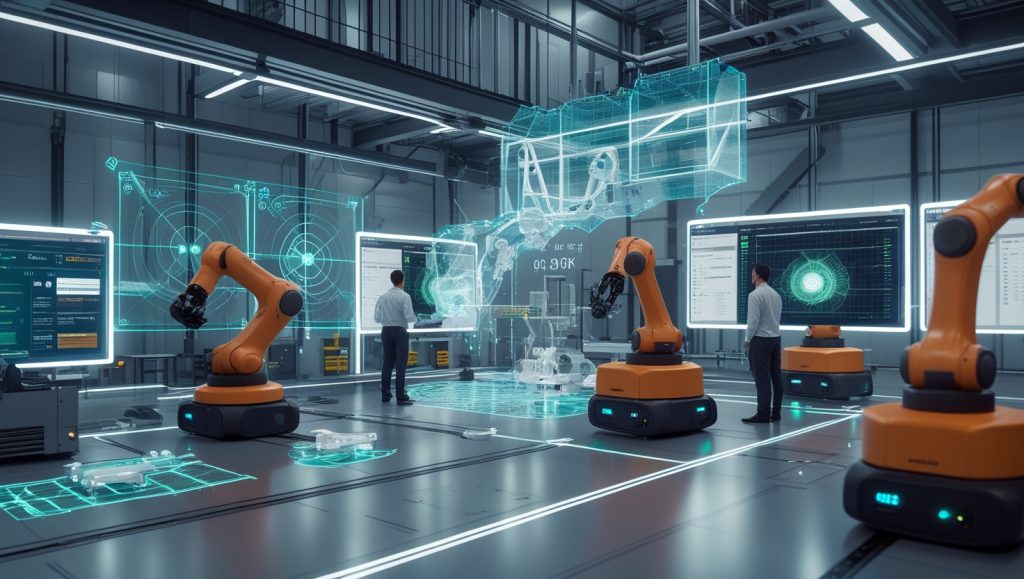
Phase 1: Infrastructure Foundation
- Sensor Mapping: Digitize physical environments with mobile scanners
- Parameter Definition: Identify critical variables (surface friction, visibility ranges, failure probabilities)
- Tool Selection: Choose open-source (FlightForge) or commercial platforms (NVIDIA Omniverse)
Phase 2: Pilot Deployment
Foxconn’s success factors:
- Started with non-safety-critical inventory robots
- Established “failure discovery” reward programs for engineers
- Compared PCG findings against historical incident data
Outcome: 150x faster simulation cycles for new production lines. This approach resonates with BMW’s humanoid robot precision manufacturing, where PCG streamlines production line testing.
Phase 3: Continuous Validation Ecosystem
BMW’s Munich plant integrates PCG into their development pipeline:
plaintext
Code Commit → Automated Scenario Generation → HIL Testing → Performance ReportThis reduced firmware regression errors by 84% within six months, a strategy also seen in industrial AI agents slashing energy costs.
Future Frontiers: Next-Generation Industrial Testing
Generative AI Integration
Emerging systems like DeepMind’s SimuGen enable natural language environment creation:
“Simulate an offshore platform during Category 4 hurricane with multiple pump failures” generates complete physics-accurate scenarios in 11 seconds. This capability enhances untethered deep-sea robots, which rely on similar simulations for ocean exploration.
Self-Improving Testing Ecosystems
2025 projections show PCG systems will:
- Analyze real-world performance data
- Identify untested edge cases
- Autonomously generate new scenarios
- Update validation suites continuously
This aligns with self-healing robotics breakthroughs, which adapt dynamically to real-world challenges.
Industrial Metaverses
Siemens and NVIDIA’s collaboration enables:
- Real-time synchronization between digital twins and physical factories
- Multi-engineer collaboration in VR testing environments
- Predictive simulation of production changes before implementation
This mirrors trends in zero-gravity robotic manufacturing, where digital twins drive innovation.
Implementation Challenges and Solutions
Determinism Concerns
Industrial engineers often resist probabilistic testing. Honeywell’s approach:
- Run AI-generated tests parallel to traditional methods
- Validate PCG findings with controlled physical tests
- Gradually expand scope after proven accuracy
Jason Urso, Honeywell CTO, recommends starting with advisory roles where AI suggests scenarios that humans approve, building trust through verifiable results (Industrial AI Summit Keynote, 2025). This strategy supports robotics in 3D printing advancements, where trust in automated systems is critical.
Cost and Accessibility
Common misconceptions debunked:
| Myth | Reality |
|---|---|
| Requires supercomputers | Runs on cloud instances (AWS/GCP) |
| Only for large enterprises | Open-source tools available (FlightForge, Gazebo) |
| Replaces all physical testing | Complements physical validation |
Actionable Implementation Checklist
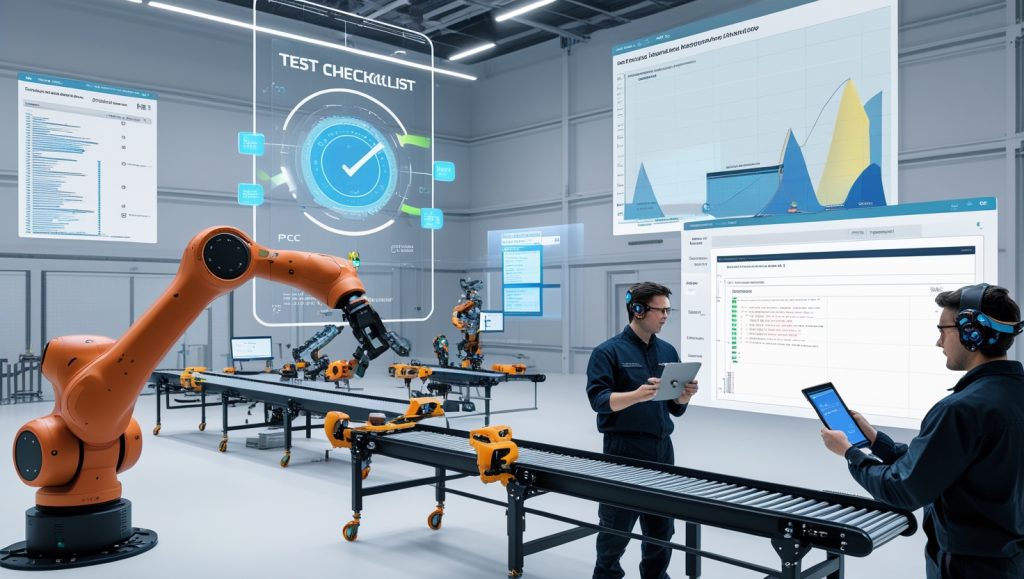
- Audit Testing Gaps: Map current methods against real-world failure points
- Prioritize High-Risk Systems: Begin with safety-critical or failure-prone robots
- Start Small: Implement PCG on single process (e.g., conveyor system)
- Quantify Metrics: Track test coverage diversity and simulation-to-reality variance
- Build Hybrid Teams: Train mechanical engineers in parameter scripting
Frequently Asked Questions
Can small manufacturers afford PCG systems?
Yes. Open-source tools like FlightForge require no licensing fees, while cloud-based solutions offer pay-per-use models. Foxconn’s pilot cost under $18,000 using existing sensors and cloud computing.
Does PCG eliminate physical testing?
No. It reduces physical testing by 40-75% according to ABB’s 2025 report, but critical safety validation still requires physical checks. PCG focuses on scenario volume impossible to physically replicate.
How do you validate the accuracy of a Procedural Content Generation (PCG) environment?
To validate a PCG environment’s accuracy, we use a mix of automated testing and human evaluation. This includes comparing generated content against defined rules or benchmarks, running simulations to test functionality, using statistical analysis to assess diversity and coherence, and gathering feedback through user testing. Visual reviews and comparison with outputs from other generators also help ensure consistency and quality.
What skills do engineers need?
Basic Python scripting (adjusting parameters)
CAD/digital twin understanding
Sensor data interpretation
The Transformative Path Forward
Procedural content generation transforms testing from a development bottleneck into a strategic advantage. As Honeywell’s Houston facility demonstrates, robots tested in infinite virtual environments deploy faster, perform reliably, and navigate complexities impossible to replicate in physical labs.
The future belongs to organizations leveraging procedural content generation robotics not merely for efficiency, but for enabling capabilities previously considered too dangerous or impractical to validate. When offshore inspection bots prevent refinery disasters or warehouse robots maintain operations during supply chain chaos, the ROI extends far beyond testing cost savings. This transformative potential is evident in China’s industrial robot dominance, where PCG drives global competitiveness.
Ready to transform your testing strategy?
- Subscribe to our Newsletter for more exclusive updates
- Download our Industrial PCG Implementation Kit (coming Soon)
- Explore FlightForge Open-Source Platform
